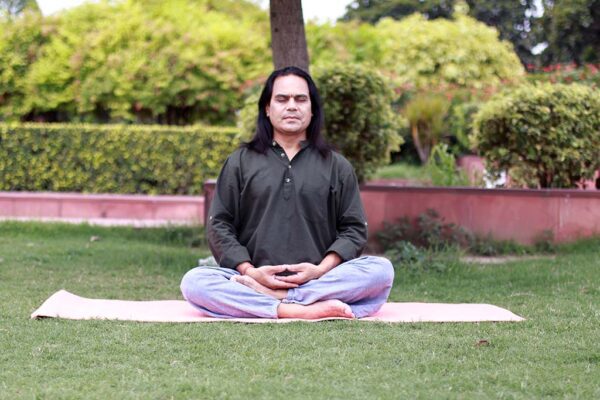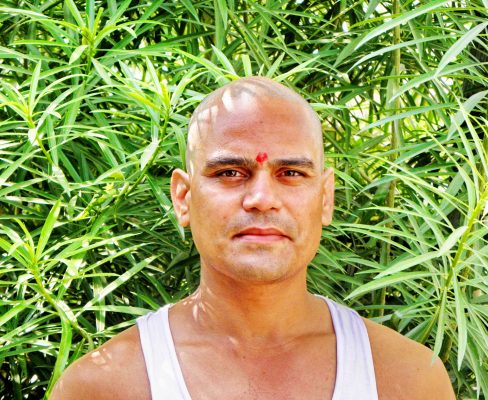India has given many Rishis, Buddhas, Saints or Sages, Ramakrishna Paramhans is one of them. He born as Gadadhar Chattopadhyay on 18th February 1836 and departed from his corporeal body on 16th August 1886. He was a famous mystic of 19th-century in India.His religious school of thought led to the formation of the Ramakrishna Mission by his chief disciple Swami Vivekananda – both were influential figures in the Bengali Renaissance as well as the Hindu renaissance during the 19th and 20th centuries. Many of his disciples and devotees believe he was an Avatar or incarnation of God. He is also referred as “Paramahamsa” by his devotees, as such he is popularly known as Ramkrishna Paramhamsa.
Ramakrishna was born in a poor Brahmin Vaishnava family in rural Bengal. He became a priest of the Dakshineswar Kali Temple, dedicated to the goddess Kali, which had the influence of the main strands of Bengali bhakti tradition. The most widely known amongst his first spiritual teachers was an ascetic woman skilled in Tantra and Vaishnava bhakti. Later in 1865, Ramakrishna was initiated into sannyasa by an Advaita Vedantin ascetic and monk, Tota Puri, who trained Ramakrishna in Advaita Vedanta, the Hindu philosophy which emphasizes non-dualism and according to Ramakrishna, he experienced nirvikalpa samadhi under his guidance. Ramakrishna also experimented with other religions, notably Islam and Christianity, and said that they all lead to the same God.Though conventionally uneducated, he attracted the attention of the middle class, upper middle class and numerous Bengali intellectuals.

Ramakrishna’s teachings were imparted in rustic Bengali, using stories and parables.These teachings made a powerful impact on Calcutta’s intellectuals, despite the fact that his preachings were far removed from issues of modernism or national independence.His spiritual movement indirectly aided nationalism, as it rejected caste distinctions and religious prejudices.
In the Calcutta scene of the mid to late nineteenth century, Ramakrishna was opinionated on the subject of Chakri. Chakri can be described as a type of low-paying servitude done by educated men—typically government or commerce-related clerical positions. On a basic level, Ramakrishna saw this system as a corrupt form of European social organization that forced educated men to be servants not only to their bosses at the office but also to their wives at home. What Ramakrishna saw as the primary detriment of Chakri, however, was that it forced workers into a rigid, impersonal clock-based time structure. He saw the imposition of strict adherence to each second on the watch as a roadblock to spirituality. Despite this, however, Ramakrishna demonstrated that Bhakti could be practiced as an inner retreat to experience solace in the face of Western-style discipline and often discrimination in the workplace.

Ramakrishna emphasised God-realisation as the supreme goal of all living beings.Ramakrishna taught that kamini-kanchana is an obstacle to God-realization. Kamini-kanchan literally translates to “woman and gold.” Partha Chatterjee wrote that figure of a woman stands for concepts or entities that have “little do do with women in actuality” and “the figure of woman-and-gold signified the enemy with: that part of one’s own self which was susceptible to the temptations of ever-unreliable worldly success.” Carl T. Jackson interprets kamini-kanchanato refer to the idea of sex and the idea of money as delusions which prevent people from realizing God.Jeffrey Kripal translates the phrase as “lover-and-gold” and associates it with Ramakrishna’s alleged disgust for women as lovers. Kripal’s translation is disputed by Swami Tyagananda, who argues this to be a “linguistic misconstruction.” Ramakrishna also cautioned his women disciples against purusa-kanchana (“man and gold”) and Tyagananda writes that Ramakrishna used Kamini-Kanchana as “cautionary words” instructing his disciples to conquer the “lust inside the mind.”

Ramakrishna looked upon the world as Maya and he explained that avidya maya represents dark forces of creation (e.g. sensual desire, evil passions, greed, lust and cruelty), which keep people on lower planes of consciousness. These forces are responsible for human entrapment in the cycle of birth and death, and they must be fought and vanquished. Vidya maya, on the other hand, represents higher forces of creation (e.g. spiritual virtues, enlightening qualities, kindness, purity, love, and devotion), which elevate human beings to the higher planes of consciousness.
Ramakrishna practised several religions, including Islam and Christianity, and taught that in spite of the differences, all religions are valid and true and they lead to the same ultimate goal—God. Ramakrishna’s taught that jatra jiv tatra Shiv (wherever there is a living being, there is Shiva). His teaching, “Jive daya noy, Shiv gyane jiv seba” (not kindness to living beings, but serving the living being as Shiva Himself) is considered as the inspiration for the philanthropic work carried out by his chief disciple Vivekananda.
Ramakrishna used rustic colloquial Bengali in his conversations. According to contemporary reports, Ramakrishna’s linguistic style was unique, even to those who spoke Bengali. It contained obscure local words and idioms from village Bengali, interspersed with philosophical Sanskrit terms and references to the Vedas, Puranas, Tantras. For that reason, according to philosopher Lex Hixon, his speeches cannot be literally translated into English or any other language. Scholar Amiya P. Sen argued that certain terms that Ramakrishna may have used only in a metaphysical sense are being improperly invested with new, contemporaneous meanings.
Ramakrishna was skilled with words and had an extraordinary style of preaching and instructing, which may have helped convey his ideas to even the most skeptical temple visitors. His speeches reportedly revealed a sense of joy and fun, but he was not at a loss when debating with intellectual philosophers. Philosopher Arindam Chakrabarti contrasted Ramakrishna’s talkativeness with Buddha’s legendary reticence, and compared his teaching style to that of Socrates.
Ramakrishna’s explicitly sexual language shocked 19th-century Westerners, even scholars Max Müller who were otherwise his admirers. Müller wrote that his language was at times “abominably filthy”. He admitted however that such direct speech was natural to contemporary Hindus, “where certain classes of men walk stark naked”, and should not be considered intentional filthiness or obscenity. Citing examples of classical poems like Bhartrihari, the Bible, Homer, and Shakespeare, Müller felt that few of the sayings would have to be bowdlerized.
Today is his Birthday. Let us salute to a Great Spiritual Master Swami Rama Krishna Paramhansa!
_________________________
Resource: www.en.wikipedia.org

















